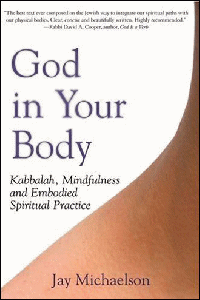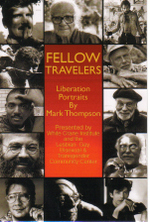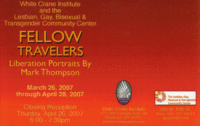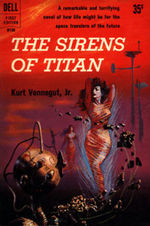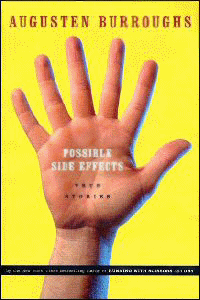 Possible Side Effects
Possible Side Effects
by Augusten Burroughs
St. Martin’s Press
304 pages, $23.95
ISBN: 0312315961
Review by Steven LaVigne
In the coffee shop I frequent, there’s a guy who’s been slowly devouring J. D. Salinger’s Nine Stories. As much as I admire his work, I made the mistake of overdosing on Salinger by reading everything in order. I’ve done that with Fitzgerald, Erica Jong and John Cheever as well, but unlike those authors, Salinger made me feel suicidal for weeks afterwards.
No matter how bizarre the world around us gets, it’s nice to know that, as we flow through it, someone else is struggling, observing things trough beer goggles or a pharmaceutical haze. Augusten Burroughs is such a person, and his latest collection of observances, Possible Side Effects, is every bit as marvelous as his other writings, no matter how jaundiced they may seem, including Running With Scissors and Magical Thinking.
Possible Side Effects included stories on Burroughs’ childhood: summertime visits with his grandmothers, one of whom he adored while despising the other; how a bloody nose while on an international flight leads to fears about leaving his hotel room and enjoying London; becoming attached, along with his lover, to a dog they fondly call “The Cow,” and the arrogance he encounters while wearing the t-shirts of assorted college teams while running around New York. He also writes at length about watching his mother sink further into addictions due to her bipolar disorder.
Among the extra-special treats in Possible Side Effects are “Killing John Updike,” where Burroughs’ good friend, Suzanne convinces him that John Updike is about to perish and that collecting first editions of his works will net a pretty profit shortly on eBay. He introduces us to his mother’s best friend in “The Forecast for Sommer,” explaining that she uses a coffin as a bookcase and collects prescription drugs. In “The Wisdom Tooth,” Burroughs and his lover, Dennis, vacation at a seaside bed and breakfast which the owner decorates with her doll collection, and Dennis becomes upset about being charged for a restaurant meal after Burroughs breaks his tooth on a baked potato.
There are hilarious sequences on his work as an advertiser, creating a campaign for Junior Mints; peeping on a neighbor and her lover, “Penis Man;” and his life before and after rehab. Possible Side Effects is jam-packed full of gems, far too many to include in a review.
When I asked the guy in the coffee shop if Salinger made him feel suicidal, he laughed and I recommended Augusten Burroughs to him. I’ll know if he takes my advice any time now. By the time this review sees print, the film version of Running With Scissors will have opened. Maybe first editions of Burroughs will become more profitable on eBay, too.


